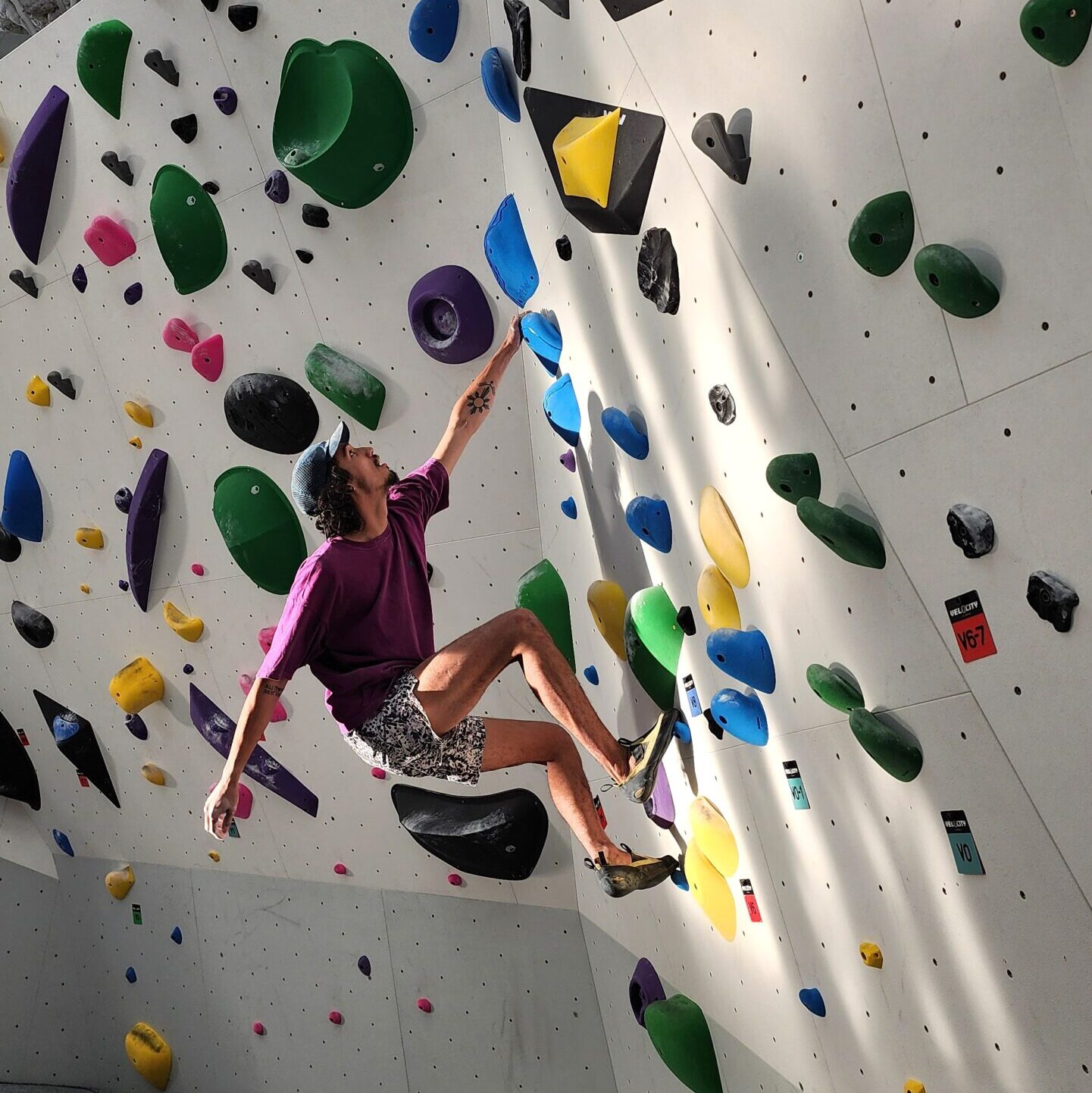Climbing chalk helps absorb moisture from your hands, creating a drier surface for better friction against the holds. This allows for better grip and more confident movements on the wall.
Less is more! Overuse of chalk can reduce friction by creating a slippery film on your hands and the holds.
Liquid chalk is a relatively new option that can be effective. It dries your hands and creates a thin layer that minimizes friction loss. However, it needs to be applied before you climb.
For best results, use a combination of techniques:
Choose pure magnesium carbonate chalk over chalk with drying agents. Pure magnesium carbonate is gentler on your skin and provides a more predictable drying effect. Additives in chalk can leave a film on your hands and the holds, reducing friction.
Remember, chalk is a tool to aid proper climbing technique, not a replacement for it.
Welcome, Miami climbers! As you scale the colorful routes at Velocity Climbing Miami, you’ll likely encounter climbers religiously applying chalk to their hands. But what exactly is chalk’s role in indoor climbing? Let’s explore the science behind this climber’s favorite powder.

Chalk: A Moisture Management Tool
If you’re trying hard, climbing is strenuous and for most of us that means sweaty hands! Excessive sweat can cause your skin to slip on climbing holds. Climbing chalk, typically magnesium carbonate, helps by absorbing moisture from your hands, creating a drier surface for better friction against the holds. This improved friction allows for better grip and more confident movements on the wall.
The benefits of chalk to absorb moisture are great. But excess chalk actually reduces friction as the tiny particles allow your skin to slide more easily just like your car has less traction on a gravel road. So, over-application of chalk can backfire, and a light dusting of chalk can enhance your grip, excessive application can backfire by creating a slippery film on your hands and the holds, negating the intended benefit.

Liquid Chalk: A Potential Ally
Liquid chalk is a relatively new addition to the climber’s arsenal. It typically contains alcohol and chalk which act as an effective drying agent. At the same time the liquid chalk creates only a very thin layer that minimizes friction loss. The only drawback is that liquid chalk must be applied before you climb, not during the climb as you continue to sweat.

The key to using chalk effectively is to find a balance, regardless of the type you choose. Here are some tips:
Chalk Up Regularly: As you climb and your hands get sweaty, reapply a small amount of chalk as needed.

Many climbing chalks are a blend of magnesium carbonate and drying agents like silica, aluminum starch or other undesirable additives and chemicals. While these additives can create a quicker initial drying effect, they might not be the most effective or climber-friendly option. Here’s why:
Chalk with Drying Agents: These chalks may dry your hands faster initially, but the drying agents can sometimes leave a film on your hands and the holds. This film can reduce friction, negating the intended benefit of chalk. Additionally, climbers usually find that the drying agents in these chalks can increase skin splits, dry cuticles and irritation.

Chalk can be a helpful tool, but it’s not a magic solution for grip strength. Focus on developing proper climbing techniques for long-term improvement.
Head down to Velocity Climbing Miami! Our friendly staff can answer your questions about chalk use, different types of chalk available, and proper climbing technique. We’re also proud to offer our own Velocity VX Performance Chalk, made with 100% pure magnesium carbonate to help you conquer those climbs with confidence! With a little practice and the right amount of chalk, you’ll be mastering those holds in no time!
Climbing chalk can be messy! Consider using a fabric chalk ball to keep the dust contained and minimize the spread of chalk around the gym.
Visit us today at Velocity Climbing Miami or check out our website to learn more about our climbing packages, memberships, and awesome climbing community!
Don’t forget to follow us on social media for climbing tips, tricks, and updates on upcoming events and classes at Velocity Climbing Miami!
2280 NW 41st Street Miami Florida 33142
1 block from Erlington Heights metrorail station.
(786) 542-5005
Monday: 3 PM – 10 PM
Tuesday: 10 AM – 10 PM
Wednesday: 3 PM – 10 PM
Thursday: 10 AM – 10 PM
Friday: 3 PM – 10 PM
Saturday: 9 AM – 10 PM
Sunday: 9 AM – 8 PM